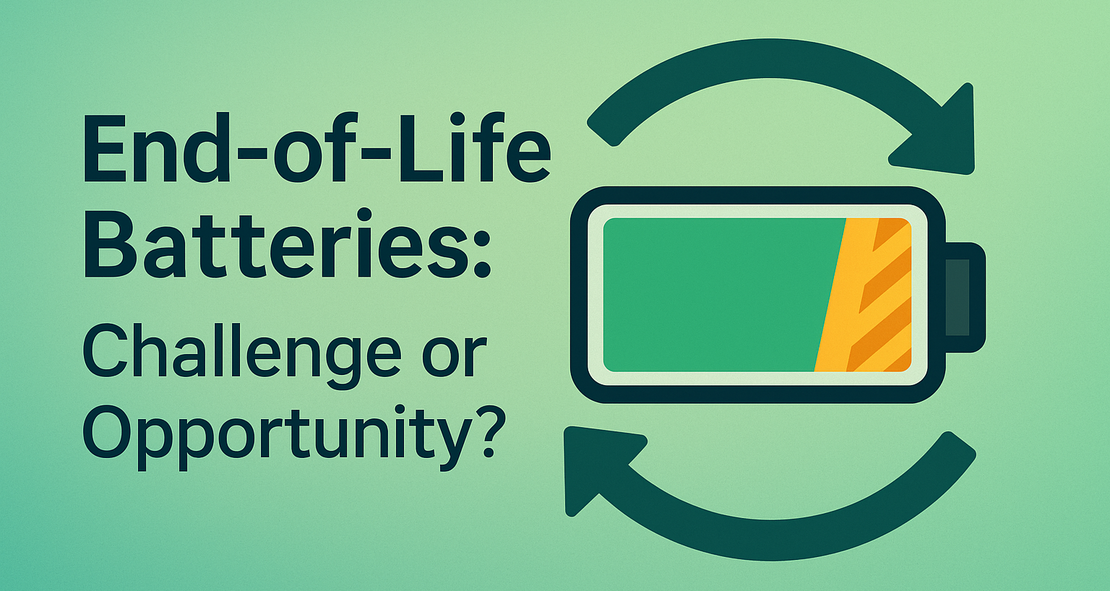
Data engineering: the invisible backbone of digital
Behind every digital application lie data infrastructures that collect, transform, and make information …

Batteries reaching the end of their life are not necessarily waste: they can open new market opportunities and contribute to a more sustainable energy future. Here are scenarios, challenges, and possibilities related to their reuse.
In 2035 society will begin to face a technological problem that is still little discussed today. What will we do with the batteries installed in electric cars or BESS that have reached the end of their useful life? With the exponential growth of battery use, from 2035 onwards it will be necessary to manage around 1 TWh of batteries per year, rapidly increasing in the second half of the 2030s.
In particular, batteries are considered no longer usable when they have lost about 20–30% of their capacity to store and release energy. This means that batteries considered “end-of-life” actually still have 70–80% of their capacity, which can be used for a myriad of applications that do not require maximum performance. In other words, if batteries have taken 10–15 years to lose ~20% of their capacity, they may still have several years of residual life in secondary applications before being completely exhausted.
In market terms, the implications are enormous. The value of these end-of-life batteries could be virtually zero, or even negative, as disposal could have a cost. But these “free” batteries could still provide a monetary benefit, considering that a BESS installation in 2025 has an average cost of about €170k/MWh (CAPEX-only estimate).
In terms of application, these batteries originally designed for the EV market will most likely serve other markets with lower performance requirements, such as BESS. We can imagine two scenarios:
In the first case, they could work on energy management for domestic consumption, effectively replacing generators used in the event of blackouts and also providing a contribution to balancing supply and demand, with potential reduction in electricity bills. In the second case, the batteries could bring a myriad of benefits: first of all, contributing when charge and discharge cycles are very slow, but also serving as “protection batteries” when the grid requires peaks in injection or absorption. This protection would benefit the installed batteries, which would be less exposed to stress, effectively increasing performance and lifespan.
If these scenarios materialize, there will be room for market operators capable of taking over these end-of-life batteries, testing them, and assembling them into new modules for the new application. Working on these batteries also has another indirect benefit: they are potentially less dangerous than new batteries, since their charging capacity is reduced. One could argue that the batteries may have been used in a non-optimal way and therefore may contain metallic lithium. Although potentially dangerous, any accumulations of metallic lithium should be identified with the right testing procedures.
The European Union is at the forefront of policies and regulations on the reuse of end-of-life batteries. Regulation (EU) 2023/1542 assigns extended end-of-life responsibility to battery/vehicle manufacturers. In addition, each battery can be tracked not only for manufacturing details but also — potentially — for how it has been used during its life. Finally, batteries will have a digital passport that verifies their requirements and sustainability data.
Today we can only imagine what future applications for end-of-life batteries will be, but we have the moral obligation to start preparing. Certainly, IT support will be needed on various fronts. First of all, tests to assess which batteries can still be used will be very sophisticated and perhaps based on AI and ML. In addition, the mentioned applications will need advanced management and control systems to ensure that these batteries can really make a significant contribution alongside traditional battery systems.
Like every challenge and opportunity the future holds for us, we can keep our eyes open on this potentially very profitable market and be ready and flexible to adapt and seize its opportunities.

Behind every digital application lie data infrastructures that collect, transform, and make information …

Machine Learning is increasingly used in business and in the management of complex systems such as energy, …